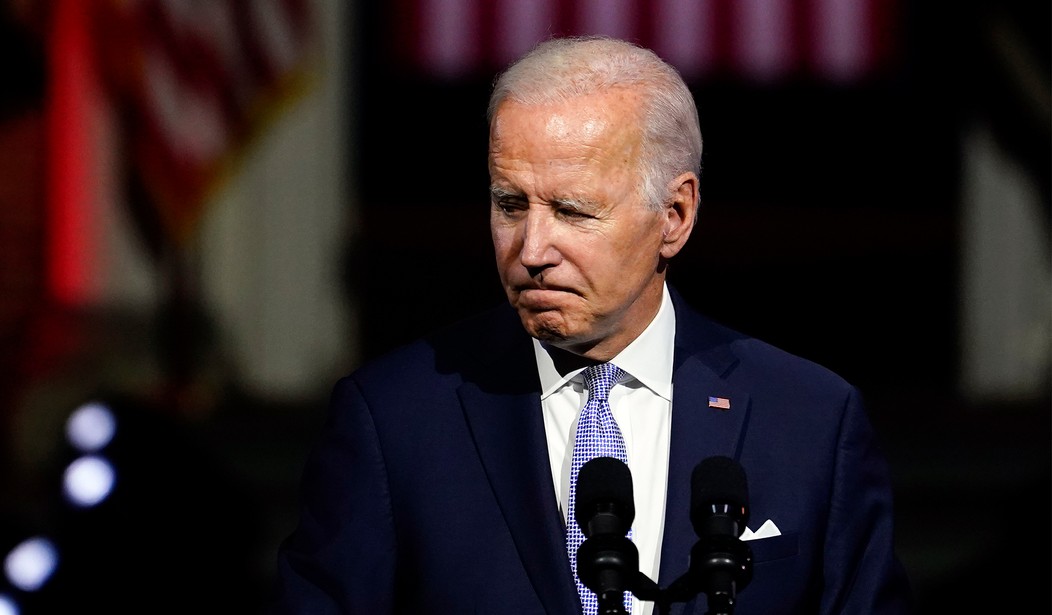Why wouldn’t it? Should it surprise anyone that inflation continued to burn out of control, given the lack of any rational response to it by policymakers?
After spending much of August and early September bragging about “zero inflation” and his superior economic policies, it turns out that Joe Biden’s inflation got hotter just where the Fed likes to watch the closest. The PCE Index rose back to 6.2% year on year, matching the rise of the CPI in the same month. The month-on-month rise was well over a small increase in real disposable personal income, too, and core PCE Index inflation rose even faster from July:
The PCE price index increased 0.3 percent. Excluding food and energy, the PCE price index increased 0.6 percent (table 9). Real DPI increased 0.1 percent in August and Real PCE increased 0.1 percent; goods decreased 0.2 percent and services increased 0.2 percent (tables 5 and 7).
CNBC’s Jeff Cox immediately picked up on the contradictory outcome to the White House’s happy talk. Cox also noted that a decline in gas prices at the pump didn’t cover overall inflation elsewhere, as was more the case in July:
Inflation in August was stronger than expected despite the Federal Reserve’s efforts to bring down prices, according to data Friday that the central bank follows closely.
The personal consumption expenditures price index excluding food and energy rose 0.6% for the month after being flat in July. That was faster than the 0.5% Dow Jones estimate and another indication that inflation is broadening.
On a year-over-year basis, core PCE increased 4.9%, more than the 4.7% estimate and up from 4.7% the previous month.
Including gas and energy, headline PCE increased 0.3% in August, compared with a decline of 0.1% in July. It rose even with a sharp decline in gas prices that took the cost at the pump well below the nominal record above $5 a gallon earlier in the summer.
The rise in core PCE Index inflation is very telling indeed, as Ben White notes. He also points out that Biden’s inflationary wave remains resistant to the Federal Reserve actions thus far, although that shouldn’t be a surprise either:
🚨 core PCE (what people pay for stuff other than volatile food and energy) popped back to 4.9 percent annual in September, defying Fed rate hikes so far. 🚨
— Ben White (@morningmoneyben) September 30, 2022
Energy has been volatile over the summer, but food inflation has gone entirely in one direction. Normally, the core index matters less in a political sense, as consumers mainly experience inflation through food and energy purchases. The core index matters more in terms of economic policy, but this has a political sense as well at the moment. It puts lie to White House claims that inflation is entirely the fault of gas-station owners and greedy corporations, especially after the rather dramatic fall in pump prices over the summer. And even those are starting to bounce back up.
As I have noted in the past, the Fed uses the PCE Index as its primary measure when calculating monetary policy. To get inflation under control, it has to match the target range for the Fed funds rate to rough parity to the PCE Index inflation rate. The Fed wants to raise rates quickly enough to get the PCE Index inflation rate to come down and meet somewhere in the middle. So far, however, that’s not happening, largely because the Biden administration refuses to adjust its regulatory and tax policies to provide incentives for supply. Biden also refuses to stop forcing inflationary monetary expansions through massive spending programs like its bailout of Academia, which will force at least $400 billion of loans or money-printing to fund.
That’s why Fed rate increases have had no impact thus far. It may not do much until the Fed’s fund rate range goes from its current 3-3.25% to much closer to the 6.2% of the current PCE Index. That will create so much demand destruction that a a deep recession is the only possible outcome, especially when Biden’s policies are unfriendly to supply and production, especially in the energy sector.
Larry Summers thinks we’re looking at something even worse:
The current level of risk in global markets is reminiscent of conditions seen in 2007 ahead of the Great Recession, ex-Treasury Secretary Larry Summers warned on Thursday.
Summers detailed his concerns one day after the Bank of England was forced to intervene to stabilize the United Kingdom’s cratering economy — an event that some saw as a potential “contagion” event that could infect global markets.
“I do certainly think we’re living through a period of elevated risk,” Summers said during an appearance on Bloomberg on Thursday. “Earthquakes don’t come all of a sudden — there are tremors first. Most of the time, when there are tremors, they’re just tremors and it goes away, but not 100% of the time.”
“In the same way that people became anxious in August of 2007, I think this is a moment when there should be increased anxiety,” Summers added.
How did the Fed react to that? By engaging in a massive monetary expansion. Those arrows have all been shot out of the quiver, however. Governments, especially in the US, did not learn the proper lessons and are repeating some of the same mistakes — overspending, diluting currencies, refusing to engage in serious fiscal discipline, and especially refusing to adopt responsible energy policies that could power real recoveries. The bubbles are all popping now, and this administration may be the least capable and competent we’ve ever had to navigate a course out of the shoals.







Join the conversation as a VIP Member